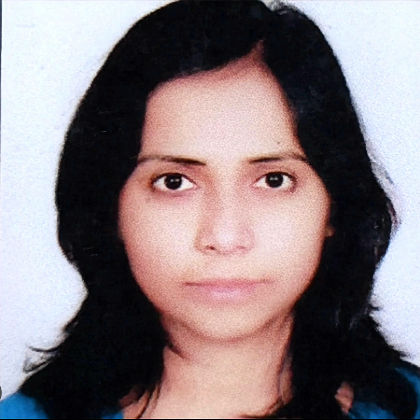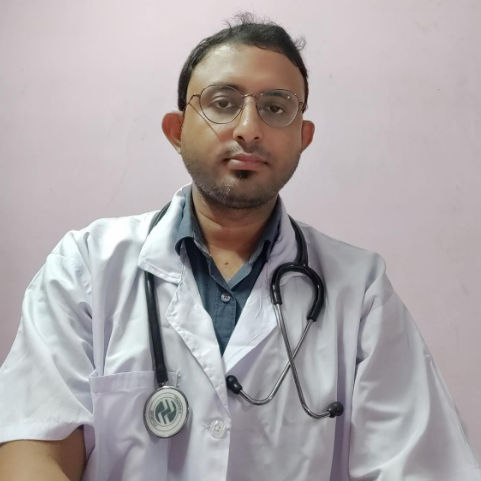How To Reduce Stretch Marks?
Learn effective ways to reduce stretch marks and improve skin texture. Explore home remedies, medical treatments, and prevention tips to help you feel more confident in your skin.

Written by Dr. Sonia Bhatt
Last updated on 3rd Jul, 2025

Introduction
Stretch marks are a common skin concern that many people experience at some point in their lives. They appear as streaks or lines on the skin, often in shades of pink, red, purple, or white, depending on how old they are. While they are harmless and don’t pose any health risks, many people wish to reduce their appearance for cosmetic reasons.
What Are Stretch Marks?
Stretch marks, also called striae, occur when the skin stretches or shrinks rapidly, causing the collagen and elastin fibres in the middle layer of the skin, called the dermis, to tear. This results in visible scars on the surface.
Several factors can lead to stretch marks:
Pregnancy – Many women develop stretch marks on the abdomen, thighs, and breasts due to rapid skin stretching.
Growth spurts – Adolescents may get stretch marks during puberty due to sudden growth.
Weight fluctuations – Gaining or losing weight quickly can lead to stretch marks.
Muscle building – Bodybuilders may develop stretch marks from rapid muscle growth.
Hormonal changes – Conditions like Cushing’s syndrome or long-term steroid use can weaken the skin.
While stretch marks may fade over time, they rarely disappear completely. However, there are ways to make them less noticeable and improve skin texture.
Consult Top Doctors for Personalised Treatment
How to Reduce Stretch Marks
Here’s how you can address stretch marks effectively:
1. Home Remedies & Natural Treatments
Simple at-home approaches may support skin health:
Moisturise Regularly – Creams with cocoa butter, shea butter, or almond oil hydrate the skin and help improve elasticity.
Aloe Vera Gel – Known for its healing properties, aloe vera can soothe the skin and promote repair.
Coconut Oil – Gentle massaging with coconut oil into stretch marks may help improve skin elasticity over time.
Vitamin E Oil – Applying vitamin E oil can support skin regeneration and softening.
2. Over-the-Counter (OTC) Creams & Lotions
For mild to moderate stretch marks, these OTC products can assist:
Retinoid Creams – Can help rebuild collagen and fade early stretch marks.
Hyaluronic Acid – Helps retain moisture and improve skin texture.
Glycolic Acid – Promotes skin renewal and can reduce the appearance of stretch marks.
Avoid retinoids if you are pregnant or breastfeeding.
3. Medical & Professional Treatments
For more stubborn stretch marks, dermatologists may recommend:
Laser Therapy – Stimulates collagen production and helps blend stretch marks with the surrounding skin.
Microdermabrasion – Exfoliates the skin to encourage new skin growth.
Microneedling – Tiny needles create micro-injuries that trigger collagen production.
Chemical Peels – Removes the top layer of skin, promoting regeneration.
4. Lifestyle & Prevention Tips
Maintaining healthy skin habits can reduce the risk of new stretch marks:
Stay Hydrated – Drinking enough water keeps the skin supple.
Eat a Balanced Diet – Foods rich in vitamins C and E, zinc, and protein support skin health.
Exercise Regularly – Exercising helps maintain a steady weight and improves circulation.
Avoid Rapid Weight Changes – Gradual gain or loss of weight reduces skin stress.
When to See a Doctor?
If stretch marks cover large areas or cause discomfort, consult a dermatologist. They can recommend the best treatment based on your skin type and the age of the stretch marks.
If you’re looking for personalised treatment options, you can book a consultation with a dermatologist through Apollo 24|7. They can guide you on the best procedures or creams for your skin.
Final Thoughts
Stretch marks are a natural part of life for many people, and while they may not vanish completely, their appearance can be significantly reduced with the right care. Whether through home remedies, OTC products, or professional treatments, there are options available to help you feel more confident in your skin.
Taking proactive steps today can help you improve skin texture and feel more confident in your appearance.
Consult Top Dermatologists
Consult Top Dermatologists

Dr. Bhavya Swarnkar
Dermatologist
14 Years • MBBS, MD, DNB (Dermatology, Venereology & Leprosy) Former Senior Resident, Department of Dermatology- AIIMS, New Delhi. Associate Consultant - Dermatology.
Bilaspur
Apollo Hospitals Seepat Road, Bilaspur
(225+ Patients)

Dr. S Madhuri
Dermatologist
10 Years • MBBS, MD. DVL, DNB, Fellow (Dermatosurgery & Lasers)
Secunderabad
Apollo Hospitals Secunderabad, Secunderabad
(300+ Patients)
Dr. Syeda Sarwath Saniya
Dermatologist
5 Years • MBBS,DVD
Bengaluru
Apollo Medical Center, Marathahalli, Bengaluru

Dr. Somshukla Ray
Dermatologist
10 Years • MBBS, MD (Dermatology,Venerology & Leprosy), DNB (Dermatology,Venerology & Leprosy)
Kolkata
MCR SUPER SPECIALITY POLY CLINIC & PATHOLOGY, Kolkata
(25+ Patients)

Dr. Madhab Datta
Dermatologist
5 Years • MBBS, MD (DVL)
Kolkata
Dr. Madhab Datta's Clinic, Kolkata
Consult Top Doctors for Personalised Treatment

Dr. Bhavya Swarnkar
Dermatologist
14 Years • MBBS, MD, DNB (Dermatology, Venereology & Leprosy) Former Senior Resident, Department of Dermatology- AIIMS, New Delhi. Associate Consultant - Dermatology.
Bilaspur
Apollo Hospitals Seepat Road, Bilaspur
(225+ Patients)

Dr. S Madhuri
Dermatologist
10 Years • MBBS, MD. DVL, DNB, Fellow (Dermatosurgery & Lasers)
Secunderabad
Apollo Hospitals Secunderabad, Secunderabad
(300+ Patients)
Dr. Syeda Sarwath Saniya
Dermatologist
5 Years • MBBS,DVD
Bengaluru
Apollo Medical Center, Marathahalli, Bengaluru

Dr. Somshukla Ray
Dermatologist
10 Years • MBBS, MD (Dermatology,Venerology & Leprosy), DNB (Dermatology,Venerology & Leprosy)
Kolkata
MCR SUPER SPECIALITY POLY CLINIC & PATHOLOGY, Kolkata
(25+ Patients)

Dr. Madhab Datta
Dermatologist
5 Years • MBBS, MD (DVL)
Kolkata
Dr. Madhab Datta's Clinic, Kolkata